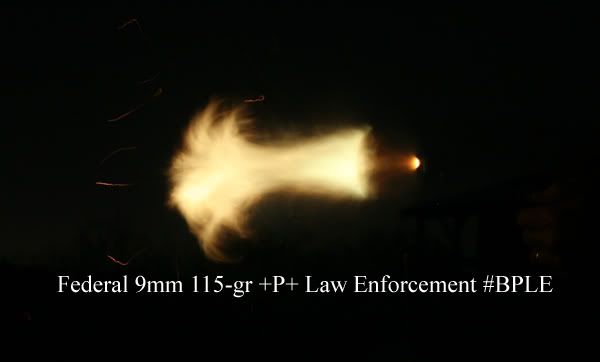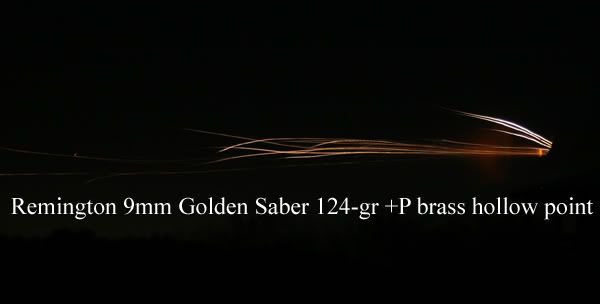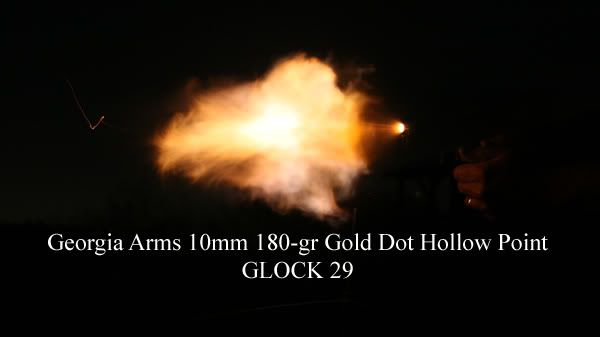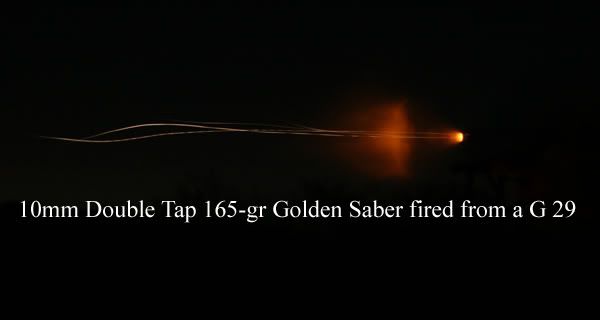Something you have to consider when carring at night.
So, have you ever shot your carry ammo at night to see what the muzzle flash does to your vision? From my experience, barrel length has some to do with the flash or lack there of, since the longer barrels give the powder more burn time. Some types of ammo will produce more flash than others. Short barrel guns usually produce more flash than longer barrels. +P or +P+ can produce more flash than standard pressure loads. The question is, will your carry ammo be helpful or harmful to you when shooting an assailant at night. When I had done my own research I have found my current rounds to be an issue. I am changing over to Golden Sabers as my carry rounds because it a good improvement on muzzle flash with out sacrificing the power of the round.
http://findarticles.com/p/articles/mi_m0BTT/is_190_31/ai_n27380935/
"The primary parameters associated with muzzle flash are the propellant (type, chemistry, burning rate, flame temperature, gas volume at the muzzle), barrel length, muzzle pressure, exhaust gas products, projectile type and primer composition. Hydrogen and carbon monoxide are generated during the deflagration of fuel-rich smokeless propellants both of which are flammable, along with carbonaceous particles, all of which are expelled from the muzzle at high temperatures and pressure. Muzzle flash occurs when these materials form a proper mixture with the oxygen in the atmosphere and are ignited. This mixing usually takes some time and distance, hence photographs of muzzle flash from most small arms often show a non-luminous space between the fireball and the muzzle. Any small amount of flame present in or at the muzzle is likely due to the primer composition."
more photos below
http://www.glockpost.com/forums/showthread.php?t=10352





So, have you ever shot your carry ammo at night to see what the muzzle flash does to your vision? From my experience, barrel length has some to do with the flash or lack there of, since the longer barrels give the powder more burn time. Some types of ammo will produce more flash than others. Short barrel guns usually produce more flash than longer barrels. +P or +P+ can produce more flash than standard pressure loads. The question is, will your carry ammo be helpful or harmful to you when shooting an assailant at night. When I had done my own research I have found my current rounds to be an issue. I am changing over to Golden Sabers as my carry rounds because it a good improvement on muzzle flash with out sacrificing the power of the round.
http://findarticles.com/p/articles/mi_m0BTT/is_190_31/ai_n27380935/
"The primary parameters associated with muzzle flash are the propellant (type, chemistry, burning rate, flame temperature, gas volume at the muzzle), barrel length, muzzle pressure, exhaust gas products, projectile type and primer composition. Hydrogen and carbon monoxide are generated during the deflagration of fuel-rich smokeless propellants both of which are flammable, along with carbonaceous particles, all of which are expelled from the muzzle at high temperatures and pressure. Muzzle flash occurs when these materials form a proper mixture with the oxygen in the atmosphere and are ignited. This mixing usually takes some time and distance, hence photographs of muzzle flash from most small arms often show a non-luminous space between the fireball and the muzzle. Any small amount of flame present in or at the muzzle is likely due to the primer composition."
more photos below
http://www.glockpost.com/forums/showthread.php?t=10352





Last edited:
